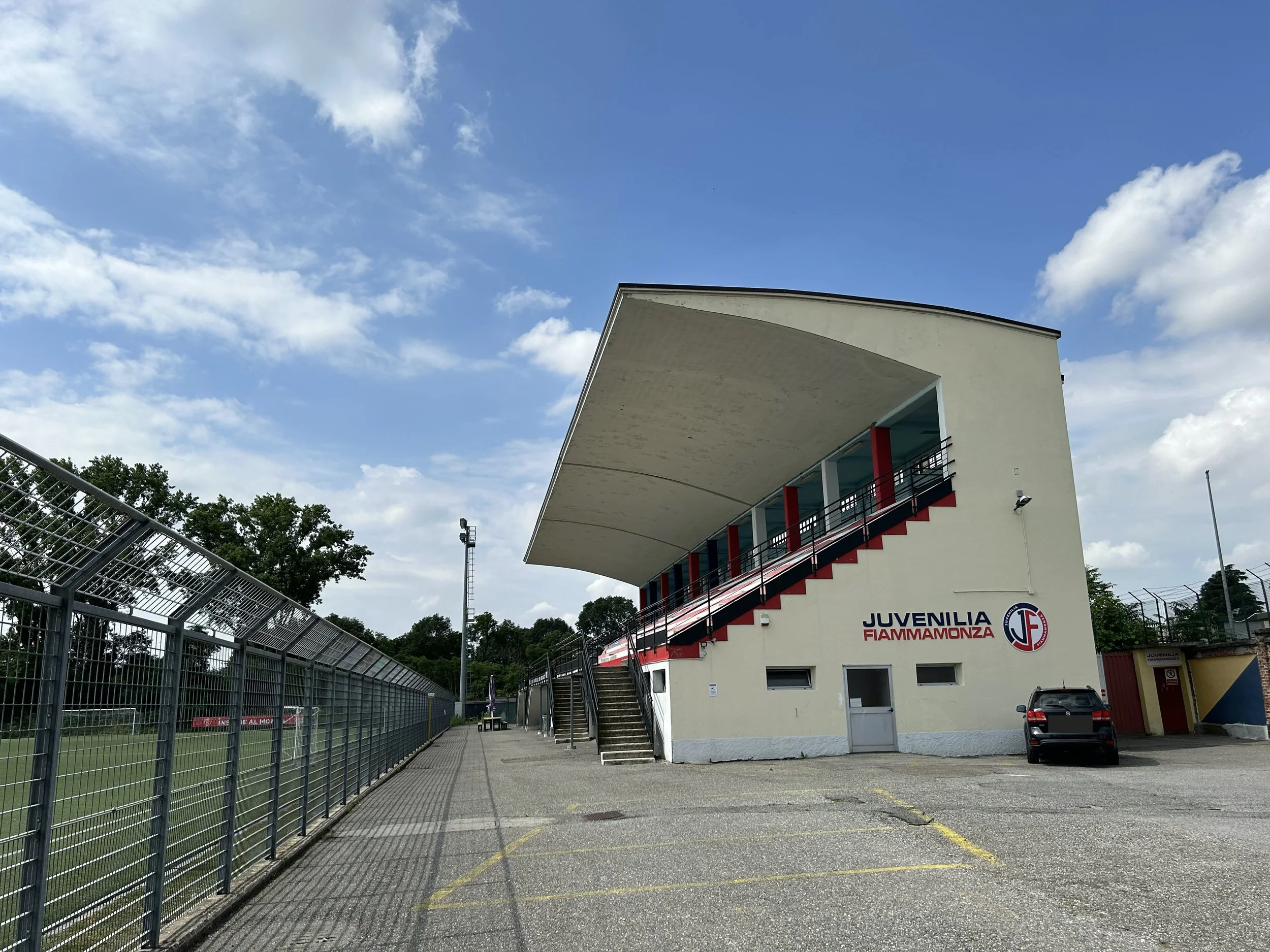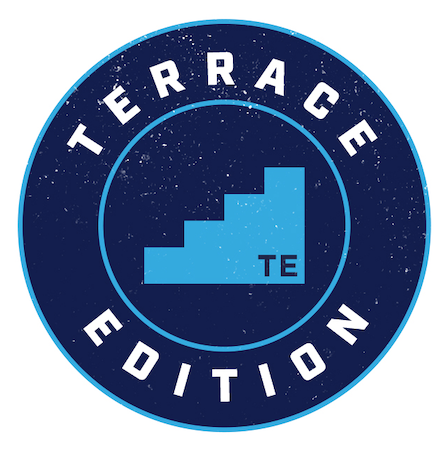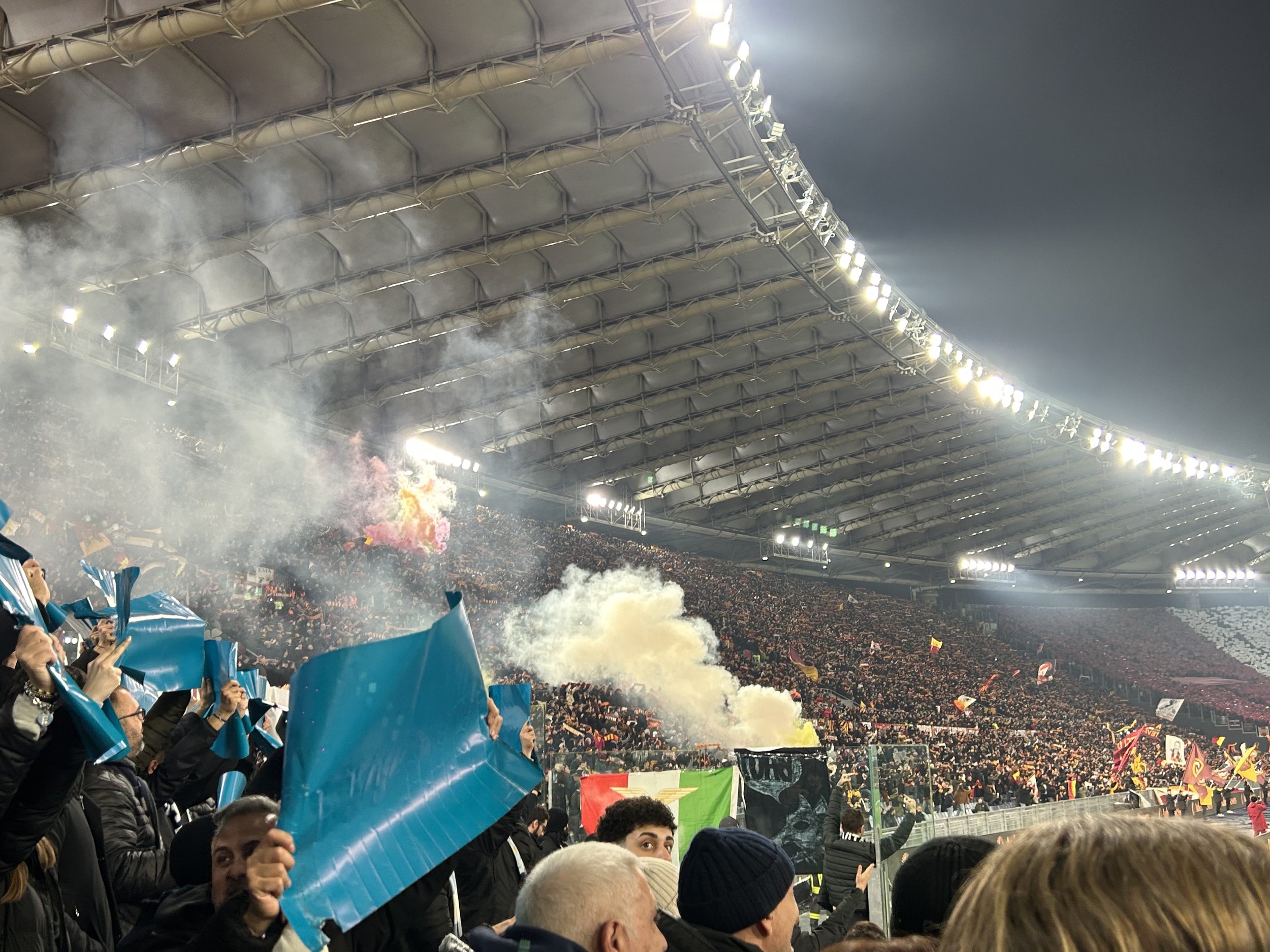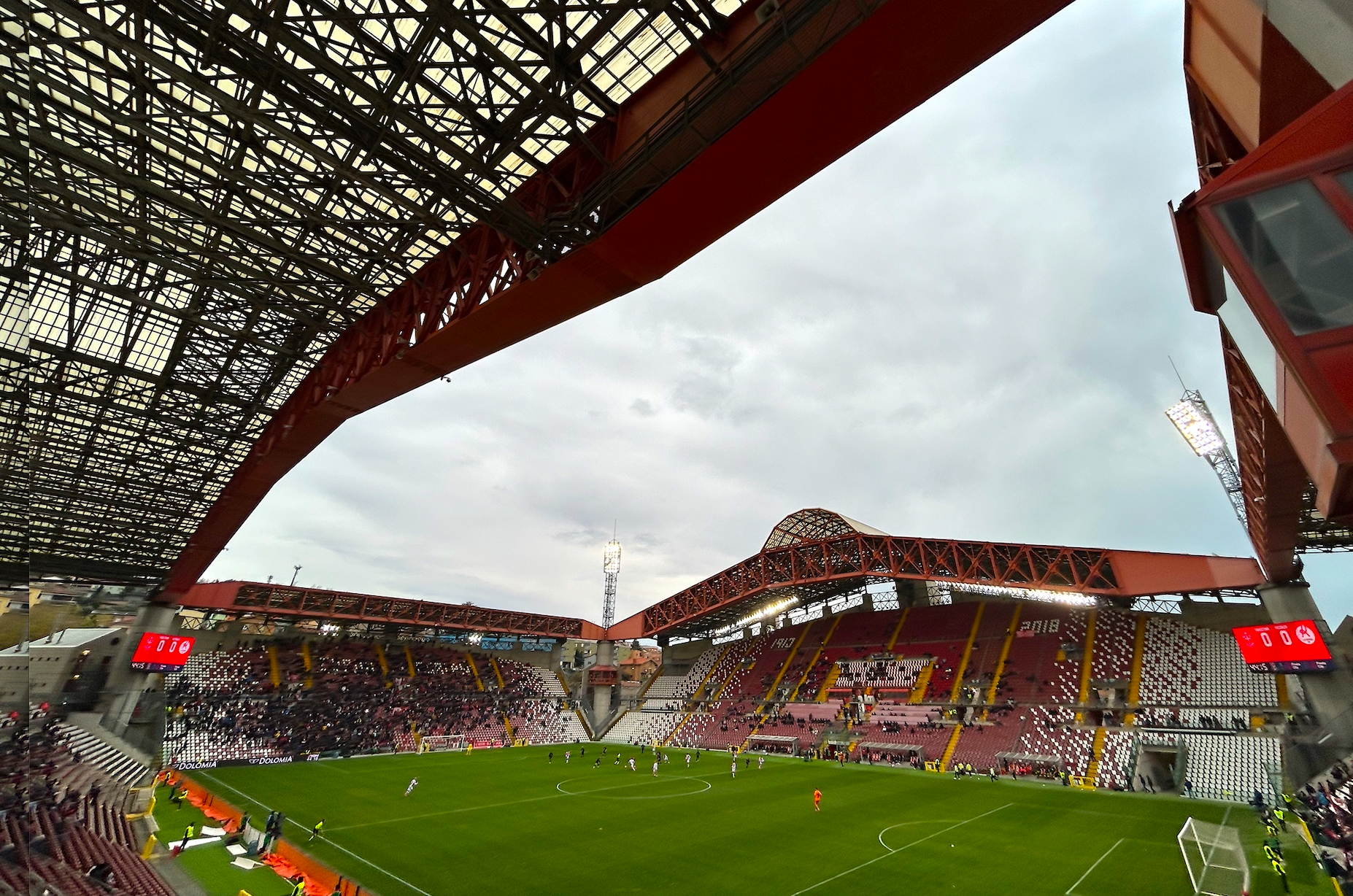Monza: A slower race

Words: Federico Farcomeni
Images: Words: Federico Farcomeni
Sada Stadium, nestled in the heart of Monza, Italy, is more than just a sports venue; it's a symbol of the city's sporting heritage.
Its storied past, spanning decades, has witnessed countless triumphs and heartbreaks, cementing its place in the hearts of Monzesi. As you approach Monza by train travelling from Milan, the main stand will be clearly visible on the right, just next to Platform Number seven (which is exactly where the namesake theatre found its place with its rationalist architecture).
Floodlights will be on most of the evenings as the women’s first team (Juvenilia Fiammamonza) train or play at the venue. Sada is the place where the “Chelsea of Milan” or the “Borussia of Brianza” used to play in its heyday.
The stadium's origins can be traced back to 1945 – the club’s members back then asked to use the field of what was actually deployed as a cemetery until World War I (it was then reclaimed by the Fascist Regime in 1930 for other leisure purposes).
©Federico Farcomeni/ Terrace Edition. Stadio Sada. Monza.
Over the years, it underwent some renovations and expansion to accommodate the growing popularity of football in Monza but it never reached a capacity of more than 12,000. A huge red Coca-Cola billboard became synonymous with the ground, just like the trees overlooking the pitch, fans climbing on them and the nearby river Lambro.
Yet its nickname – the roost – rather seemed to pay homage to the fences surrounding the pitch on which fans used to push to steer the team on. Nowadays, the solitary main stand (capacity of 2,000) still stands right next to the stadium’s custodian accommodation as he grows his own fruit and veg there.
On the other side, just next to the wire fences, Orthodox believers (mostly Eastern Europeans) rush to the Sunday service at the nearby Saint Gregory church as the religious rite has finally replaced the pagan rite of football.
While the stadium may have seen better days, its charm and history remain undeniable. The wrecked terraces and the faded red paint tell tales of countless matches, triumphs, and defeats.
©Federico Farcomeni/ Terrace Edition. Stadio Sada. Monza.
The stadium's walls are adorned with the Fiammamonza club's crest and the bronze bust of Gino Alfonso Sada, the king of potted meat Simmenthal and father of president Claudio who built a quite visionary club in the 1950s and 1960s.
In 1955, Monza became known as Simmenthal as it was one of the first clubs to be named after a sponsor. When national tv RAI decided to broadcast the very first football match on tv on a Saturday, the public service chose Simmonza v Hellas Verona (Serie B) – only 1,500 were in attendance as the rest of the fans chose to watch it at their local bars on telly.
The club earned 700,000 lire on this occasion.
Sada Stadium has been home to Monza's football team for generations up until 1988. The stadium's unique character, with its sloping terraces and intimate proximity to the pitch, has made it a beloved venue for both players and spectators.
©Federico Farcomeni/ Terrace Edition. Stadio Sada. Monza.
The passionate Monzesi fans have filled the stands, creating an electric atmosphere of hope more than expectation, so much so that it became iconic in the scene of the movie in which actor Renato Pozzetto famously stated “I support Monza and we won’t ever play in Serie A!”.
After beating Wimbledon in the Anglo-Italian Cup final in 1976, in 1977 Monza came just one point short of promotion and one year later only two.
In 1979, the stage was set to go up but a home loss against Lecce on the last day of the season sent the red and whites to the playoff in Bologna: 35,000 fans spurred on Pescara to victory.
In 1980, Monza again came three points off the finishing line before eventually ending up bottom in 1981 and surrendering all hopes of promotion to Serie A until 2022.
©Federico Farcomeni/ Terrace Edition. Stadio Sada. Monza.
“It felt like going to Rome four times without being able to see the Pope” as their once rampant manager Alfredo Magni recently put it.
At present, nature has taken over the stand where local ultras used to gather and create hell for opponents, as it looks straight out of the Jumanji set.
With the train station sitting just next to the ground, it’s easy to imagine visiting supporters descending from their platform straight onto their stand and not without any incident as past chronicles told about hails of stones raining on them – local authorities struggled for years to prevent brawls as stadium access was limited to basically just one street.
Nowadays, homeless people casually sleep under the roof of one of the old gates, right next to the unused wooden ticket booths. A scratched plaque remembers the athletes who lost their lives in the war.
However, an impending facelift is due soon as the Lombardy Region has allocated 270,000 euros to take Sada stadium into the future. As Monza continues to grow and evolve, despite the volleyball team having migrated to Milan and its football club trying to growingly associate itself with the Formula One’s Temple of Speed (see their latest third kit).
Sada Stadium stands as a testament to the city's sporting heritage. It is a place where generations of Monzesi have come together to celebrate their shared passion for football, despite growing at a stone’s throw from the San Siro.
©Federico Farcomeni/ Terrace Edition. Stadio Sada. Monza.
©Federico Farcomeni/ Terrace Edition. Stadio Sada. Monza.
©Federico Farcomeni/ Terrace Edition. Stadio Sada. Monza.
©Federico Farcomeni/ Terrace Edition. Stadio Sada. Monza.
©Federico Farcomeni/ Terrace Edition. Stadio Sada. Monza.
©Federico Farcomeni/ Terrace Edition. Stadio Sada. Monza.
©Federico Farcomeni/ Terrace Edition. Stadio Sada. Monza.
©Federico Farcomeni/ Terrace Edition. Stadio Sada. Monza.
©Federico Farcomeni/ Terrace Edition. Stadio Sada. Monza.
Federico is on X: @fedefarco
AC Monza are on X and Instagram: @acmonza
Their website is www.acmonza.com



















